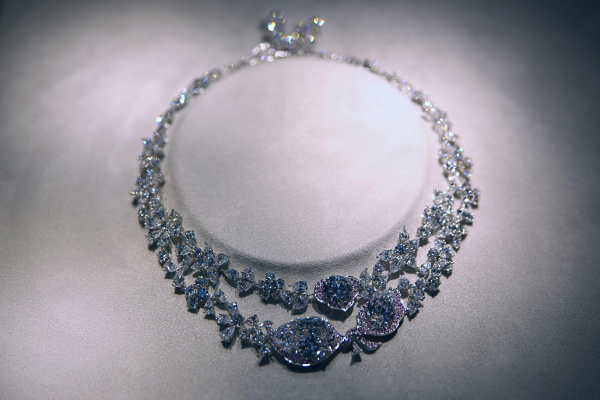Are Diamonds Still A Girl's Best Friend? Industry Sees Major Downturn Amid Coronavirus Pandemic

KEY POINTS
- Overall jewelry sales were off 75% through April 1
- Diamond producers are sitting on about $3.5 billion in stones
- The world's largest diamond mining firm, Russian-owned Alrosa, projects it will have a 30-million carat stockpile by the end of the year
With few jewelry stores open, consumers sitting on the sidelines and diamond exchanges closed as a result of the coronavirus pandemic, the mined diamond industry has ground to a virtual halt amid efforts to grapple with the growing popularity of synthetic stones.
Earnest Data estimates retail spending on jewelry in the U.S. was off 75% through April 1 while Dinesh Navadiya, GJEPC, estimated Indian diamond exports were off $846 million.
“We’ve never had an environment where commercial activity right across the whole pipeline, let alone the whole luxury goods industry, has simply come to a halt,” David Prager, executive vice-president corporate affairs at DeBeers, told Jeweller magazine. DeBeers, the world’s second largest diamond producer, estimated 2020 production will be down 20%.
Specialist advisory firm Gemdax estimated the five largest diamond producers are sitting on $3.5 billion in stones and that stockpile could grow to $4.5 billion. Russian diamond mining firm Alrosa, the world’s largest, said recently it could have 30 million carats on hand by the end of the year, which amounts to a full year’s production.
“They’ve tried to restrict rough-diamond supply to protect the market and protect value,” Gemdax partner Anish Aggarwal told Bloomberg. “The question will be, how does this destocking occur? Can miners destock and keep protecting the market?”
In its weekly report, the Rapaport Group said the diamond market remains slow despite the reopening of retail outlets, but prices are improving and online sales up 7% to $165 million.
Moody’s Investors Service estimated earlier this month rough diamond sales could fall as much as 40% this year as a result of coronavirus lockdowns, prompting it to lower credit ratings for Alrosa, DeBeers and PJSC. Though Moody’s expect the industry to begin recovering in the second half of the year, any recovery will be dependent on whether further lockdowns are ordered in a second wave of infection.
Moody’s reported polished diamond sales by Indian cutters and polishers were down 21% in the year that ended March 31, falling to $19 billion compared to $24 billion in the comparable previous period. Alrosa reported May sales off 86% to $36 million.
At a sale in May, DeBeers, the world’s largest diamond producer, sold just $35 million in stones, less than 10% of what it sold at a similar event in 2019.
Smaller diamond producers reportedly have dropped their prices to unload inventory but DeBeers and Alrosa, which represent about half of global diamond production, have refused, opting instead to allow buyers to renege on contracts.
Even before the coronavirus hit, the industry was fighting off competition from synthetic stones and recently unveiled a website to promote natural stones, positioning mining operations as a boon to surrounding communities.
David Kellie, CEO of Natural Diamond Council, told Forbes the industry is trying to attract younger buyers – the current average age of the diamond jewelry consumer is 45 -- positioning natural stones as a luxury item to put them in a separate category from man-made stones.
“I don’t see lab grown diamonds being competitive to natural diamonds. ... We shouldn’t be attacking lab grown diamonds. Our opportunity is to considerably grow this industry and anything that has to do with lab-grown diamonds is a distraction,” he said.
He said the new approach will stress the sustainability, authenticity, transparency and personal meaning of mined stones.
“Consumers will have a greater respect for all things natural and seek brands that have an honest mission to be truly sustainable,” he said.
In addition to DeBeers and Alrosa the Natural Diamond Council represents Dominion Diamonds, Lucara Diamond, Petra Diamonds, Murowa Diamonds and Rio Tinto, accounting for 75% of annual production.
© Copyright IBTimes 2025. All rights reserved.





















